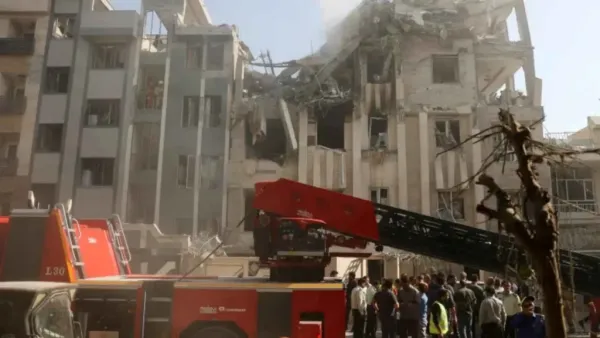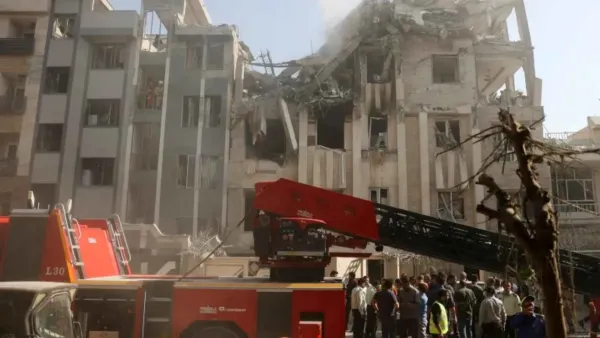

Israeli Prime Minister Benjamin Netanyahu on Friday confirmed that Israel had launched direct strikes on Iran’s Natanz nuclear facility and attacked several other critical sites tied to Tehran’s nuclear and ballistic missile programs. The operation, dubbed “Operation Rising Lion,” marks a bold move in the long-simmering conflict over Iran’s atomic ambitions.
‘We Struck at the Heart of Iran’s Nuclear Programme Under Operation Rising Lion’
Speaking shortly after the military action, Netanyahu stated unequivocally that Israel had struck multiple high-value targets in Iran, including its main uranium enrichment facility and top nuclear scientists.
“We struck at the heart of Iran’s nuclear enrichment programme. We struck at the heart of Iran’s nuclear weaponisation programme. We targeted Iran’s main enrichment facility in Natanz. We targeted Iran’s leading nuclear scientists working on the Iranian bomb. We also struck at the heart of Iran’s ballistic missile programme,” Netanyahu said.
According to the Israeli leader, these actions were necessary to preempt a dire threat to Israel’s security posed by Iran’s rapidly advancing nuclear and missile capabilities.
Operation Rising Lion: Explosion Confirmed at Natanz by Iranian State Media
Citing Iranian state television and AFP reports, a large explosion was reported at the Natanz uranium enrichment facility in central Iran, located in Isfahan province. Local broadcasters aired footage of thick black smoke rising from the site, confirming visible damage on the ground.
“New explosion heard at Natanz uranium enrichment facility,” an Iranian broadcaster announced.
Read More: Was Trump Aware Of Israel’s Recent Deadly Military Strikes On Iran? Check POTUS’ Shocking Reply
Netanyahu Warns of Growing Missile Threat
The Israeli Prime Minister warned that Iran’s ballistic missile programme poses a growing existential threat to Israel.
“Last year, Iran fired 300 ballistic missiles at Israel. Each of these missiles carries a tonne of explosives and threatens the lives of hundreds of people,” Netanyahu said.
“Soon, those missiles could carry a nuclear payload, threatening the lives not of hundreds, but of millions. Iran is gearing up to produce 10,000 of those ballistic missiles within three years. Now just imagine, imagine 10,000 tonnes of TNT landing on a country the size of New Jersey. This is an intolerable threat. It must be stopped.”
Link to Proxy Attacks and October 7 Incident
Netanyahu framed the latest strikes as part of Israel’s broader strategy to counter Iran’s influence and proxy network across the region.
“Iran’s new plan to destroy Israel involves surrounding the country with regional proxies and launching direct attacks, including the October 7 incident,” he said, according to the Associated Press.
“But the people of Israel, the soldiers of Israel rose like lions to defend our country. We crushed Hamas. We devastated Hezbollah. We hit Iranian proxies in Syria and Yemen. And when Iran directly attacked us twice last year, we struck back inside Iran itself. Yet in defending ourselves, we also defend others,” Netanyahu added.
Why Natanz Was Targeted Under Operation Rising Lion
The Natanz facility, located about 250 kilometres south of Tehran, is one of Iran’s most prominent nuclear sites. It houses thousands of centrifuges used to enrich uranium—either for nuclear energy or potentially, for weapons-grade material.
Over the years, Natanz has been at the centre of international scrutiny and diplomacy, becoming a frequent target of sabotage efforts, including cyberattacks like the 2010 Stuxnet virus—widely believed to have been developed by the US and Israel.
The site was struck by a mysterious explosion in July 2021, which Iranian officials described as sabotage. The facility was later rebuilt deeper underground to resist attacks.
Iran’s Nuclear Infrastructure: Key Sites
- Fordow Enrichment Facility: Situated 100 kilometres southwest of Tehran, Fordow is smaller than Natanz but deeply fortified within a mountain, making it resistant to airstrikes. The site was only revealed in 2009 after it was detected by Western intelligence.
- Bushehr Nuclear Power Plant: Located along the Persian Gulf, this is Iran’s only operational nuclear power plant. Initially started in the 1970s, it was completed with Russian assistance and operates under IAEA oversight. Iran is constructing two more reactors at the site.
- Arak Heavy Water Reactor: Located 250 kilometres southwest of Tehran, the Arak facility can produce plutonium—a potential alternative route to nuclear weapons. Under the 2015 nuclear deal, Iran had agreed to redesign the reactor to reduce proliferation risks.
- Isfahan Nuclear Technology Center: Roughly 350 kilometres from Tehran, the centre is a major R&D hub, home to thousands of nuclear scientists and multiple reactors, some supplied by China.
- Tehran Research Reactor: Housed within Iran’s Atomic Energy Organization headquarters, this reactor was gifted by the US in 1967 and converted from highly enriched uranium to low-enriched uranium to reduce nuclear risks.
Other sites include uranium mines at Saghand, enrichment facilities at Fordow and Tehran, and nuclear installations at Sirik, Darkhovin, Anarak, Ardakan, and Karaj.
Backdrop of Rising Tensions
The Israeli strike comes just one day after the International Atomic Energy Agency (IAEA) Board of Governors formally censured Iran—the first such move in 20 years—over its failure to cooperate with inspections.
In retaliation, Iran vowed to build a third enrichment site and install more advanced centrifuges.
While Iran has consistently denied seeking nuclear weapons, Israeli and Western intelligence remain skeptical. Israel has long pledged to prevent Tehran from acquiring such capabilities.
-
High-level panel set up to examine causes for Air India plane crash

-
British Parliament Flag Lowered, Flowers Outside India House — Tributes Pour In For Air India Crash Victims

-
Simple cruise hack can help you get more cabin storage without paying extra

-
Cabin crew horror as flight attendant shares one 'pre-used' item given to flyers

-
King's Birthday Honours: David Beckham and Luke Littler among 17 sports people recognised
